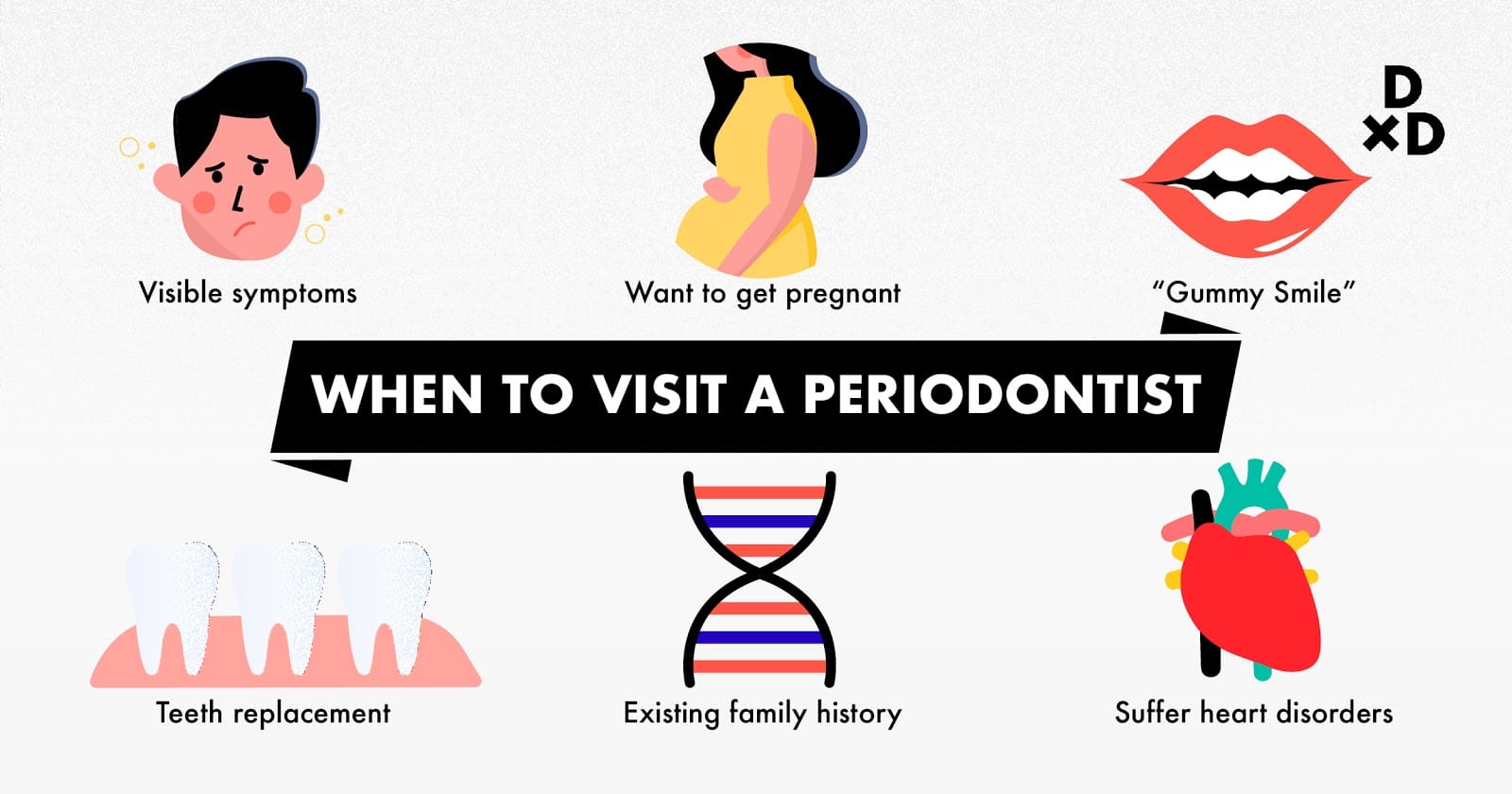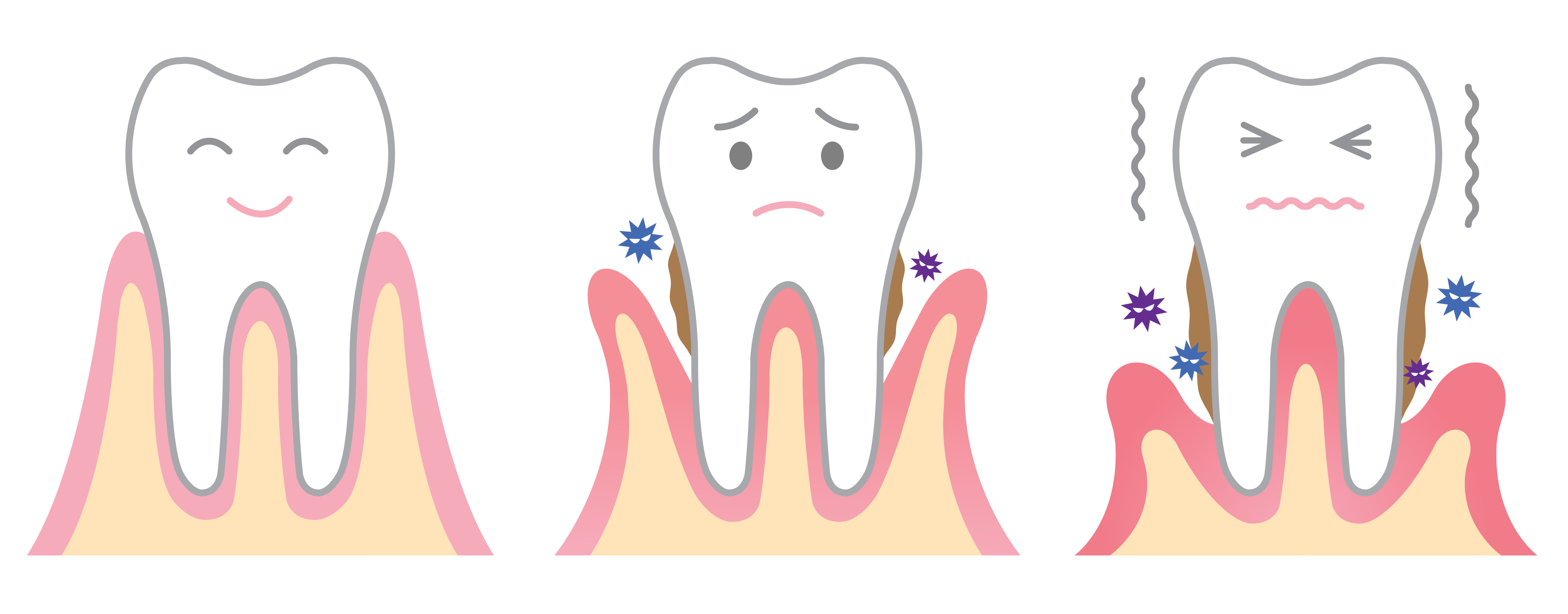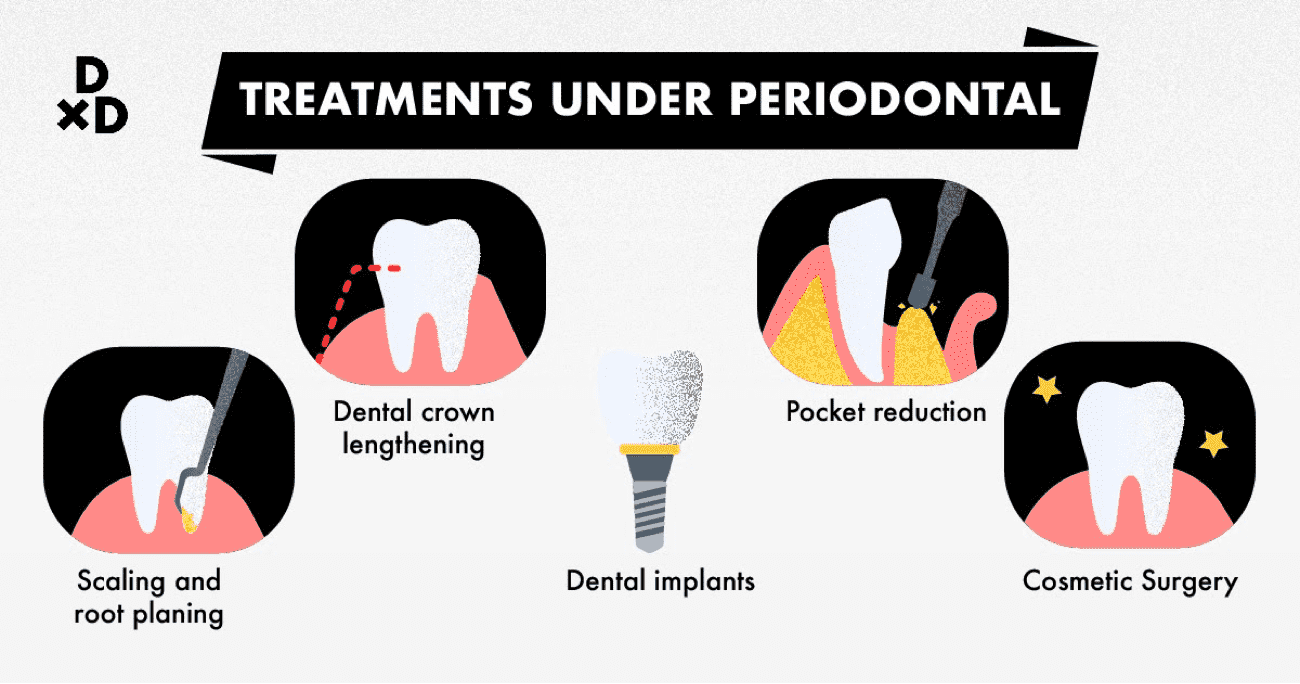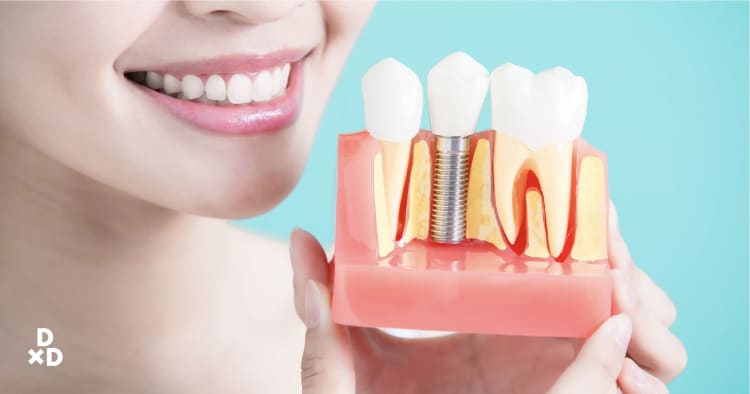You’re used to going to the dentist and just seeing the doctor, the hygienist & maybe a dental assistant. But now you’ve been told you need to see a periodontist too. At that moment, you might be thinking ”Wait can you say that again? Perio what?”
Don't panic if you have never used the word periodontist. Here is all that you need to know about periodontists!
What is a periodontist?
Peri = around
Odont = tooth
One of the least known types of dentists is a periodontist. A periodontist is a dentist who specializes in the detection, diagnosis and treatment of gum infections, the reconstruction of gum-related cosmetic problems and the placement of dental implants. Periodontists are specialists in oral inflammation treatment, too.
Periodontists are often referred to as gum gardeners because they "tend to the soil that supports your teeth". Their work leads to healthy bones and gums to hold your teeth together.
What special training do you go through to be a periodontist? Is there a special certification?
Periodontists receive extensive training in these fields after undertaking a residency following four years of dental school that requires an additional three years to complete [1].
Periodontists are specialised in performing periodontal cosmetic procedures too. In recent decades, as an aesthetically appealing smile has become a key component of periodontal and implant treatment, various surgical procedures have been created to enhance aesthetic outcomes and functional reconstruction of gums [2].
When should I visit a periodontist?

Periodontal assessment may be particularly relevant where:
You notice certain symptoms, such as bad breath, bleeding gums or loose teeth
You want to get pregnant. Pregnant women with periodontal disease could be more likely to have a baby born too early and too small [3]. Additionally, more women develop gingivitis during pregnancy. This condition is termed pregnancy gingivitis [4].
You think your teeth are too short or your smile too "gummy".
One or two of your teeth are missing, and you are interested in a long-lasting replacement option.
Your parents have lost their teeth due to periodontal infection and you worry that you have inherited those bad genes. So having it checked may alleviate the fear that you will lose your teeth too.
You suffer from heart disease, diabetes or respiratory disorder. Research shows that periodontal disease may be associated with heart disorders [5]. Periodontal disease-associated bacteria may travel into the bloodstream and pose a threat to other areas of the body; healthy gums will carry a better body.
What common diseases do periodontists treat?

The most common disease a periodontist has to treat is:
Gum disease
Gum disease (periodontal disease) is a common term meaning an infection or inflammation of the teeth’s underlying tissues. Gum disease has two primary forms: gingivitis and periodontitis.
Mild gum disease is called gingivitis which is typically not severe. More serious gum disease is called periodontitis. If left untreated, periodontitis can lead to the destruction of the connective tissue and alveolar bone loss around the teeth, causing the teeth to fall out [6].
Gingivitis means the gums get inflamed. It is a reversible disease that typically occurs as a reaction to the accumulation on the teeth and gums of dental plaque, thus the term plaque-associated gingivitis.
Periodontitis means 'inflammation of the tooth'. It has all the symptoms of gingivitis in the early stages, but as the disease progresses it can be distinguished from gingivitis by its damaging impact on the other periodontal tissues, i.e. the bone and periodontal ligament. The results of this disruption to tissue are usually permanent.
What treatments fall under periodontal therapy?
A periodontist may be called upon to perform any of the following treatments:

Scaling and Root Planing
Scaling and root planing is a thorough cleaning beneath the gum line. When gum disease occurs, tissue inflammation may result in the gum being separated from the root surface, forming a tiny gap known as a periodontal pocket. Keeping it clean at home with tooth brushes can be very challenging, which encourages bacteria to accumulate. This bacteria forms plaque, which subsequently calcifies into Tartar. Thus professional cleaning with a Periodontist to remove the tartar is needed [7].
Dental Crown Lengthening
Sometimes teeth break or decay beneath the gum line. When the restorative dentist cannot repair the teeth with a filling or a crown, a periodontist will have to reshape your gum and bone to reveal more tooth structure. The restorative dentist can now access the broken tooth margin or the decay and the new crown or filling can “grip” the teeth better [8].
Dental implants
One procedure for replacing lost teeth is a dental implant [9]. Dental implants usually replace the lost tooth as tooth loss occurs due to periodontal disease. An implant is similar in shape to a screw, also known as an artificial tooth root.
A periodontist surgically inserts the implant into the jawbone of the patient and attaches it to the natural bone. Periodontists are specialists in soft tissue management, so they focus on making your gums look healthy and nice around the implant as well.
Pocket Reduction
Pocket reduction surgery, also known as flap surgery, eliminates bacteria that exist under the gums. A periodontist uses small tools for lifting the gums back and removing tartar during the procedure. This surgery also removes any of the gaps between the tooth and the gums, thereby reducing the risk of any damage done by periodontal disease.
It is safer to clean these areas once you have recovered and maintain good gum tissue [10].
Cosmetic surgery
Periodontists also specialise in cosmetic procedures, in addition to undertaking surgical treatments to repair teeth and gums due to serious gum diseases. These treatments help to preserve the normal smile of a patient:
Gummy smiles. This procedure is also known as aesthetic crown lengthening. Aesthetic crown lengthening is done to lengthen teeth that are too short. Some people have gummy smiles and a periodontist may reshape the gums to reveal more of the natural teeth to allow more of your pearly whites to show. So the length of the teeth can match the shape of your face [8].
Exposed roots. This happens as the gum tissues surrounding the teeth fall away, allowing the roots of the teeth to become visible. It causes the teeth to appear longer than they are and you can look older! Periodontists may be able to do gum graft surgery, using tissue from the root of your mouth to mask the exposed roots, possibly reversing the gum recession process. [11].
Gum or Jaw Indentations. Bone can shrink following the loss of teeth. Even if a dental implant for bridge is placed, it will make the artificial teeth look unnatural and imperfect compared to the normal teeth around them. Periodontists usually restore the normal contour of the gums and jaw using bone and gum grafts to augment your bone ridge [12]
Is it insurance or Medisave-claimable?
Only dental implants are Medisave-claimable! However, it is only claimable up to a limit of $950 for one dental implant [13].
If you are unsure if your particular treatment allows Medisave to be used, check with your periodontist to prevent miscommunication.
What can I expect on my first periodontal appointment?

Your periodontist will take a full personal history, assess the condition and devise a treatment plan at the first consultation. Bring a list of all the medications you are taking, including over-the-counter and nutritional supplements. Your medical test will involve evaluating your head, neck, jaw, mouth and throat, as well as your teeth and gums. You will probably need to take an x-ray. Your periodontist will address care plans after a decision is made and provide a detailed program that includes continuing maintenance.
What to prepare before periodontal treatment or surgery?
You may need to avoid taking some drugs, including aspirin (Bayer, Bufferin), pain relievers, and blood thinners a few weeks before the procedure. You should not smoke or drink alcohol at least 24 hours prior to the procedure.
Your doctor may want you to take an antibiotic before the procedure to reduce your risk of contracting an infection.
If you choose to have sedation for your surgery, you will also have to arrange for someone to drive you home after the procedure is over. Your response time may be influenced by the anaesthesia, sedation or other drugs you may take during the procedure. This means driving home afterwards will not be safe for you.
Seek specific instructions from your doctor on how to prepare for your procedure.
How long will the recovery time take?
Your recovery depends on the extent of your condition, your physical health, and the type of treatment you have undergone. There may be no downtime for the procedure, or you may take a week to recover. Follow the guidance of your periodontist.
How do I find the best periodontist for me in Singapore?
Seeking the best periodontists in your area may be as easy as obtaining a recommendation from your dentist. If you handle the search yourself, find the following main considerations before choosing a periodontist:
- Credentials and continuing education
- Length of time in practice
- Conservative or aggressive treatment philosophy
- Dental insurance plans accepted
- Location and office hours
- Emergency care options
All in all
Everyone has a unique set of teeth and gums, thus, you might want to look for the right treatment by seeing your periodontist. Periodontists are not the common dentists you meet, and now you know what a periodontist is and why you need to see them.
Dr Marlene Teo is a Periodontist (gum specialist) at An Dental. She is a diplomat of the American Board of Periodontology and is the current president of the Women’s Implantology Network, Southeast Asia. Dr Teo passionately believes in leading a holistic and healthy lifestyle to boost immunity and combat periodontal disease.












